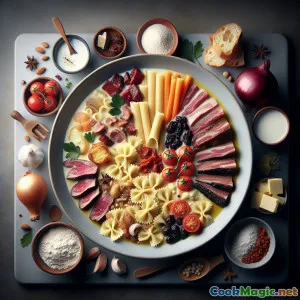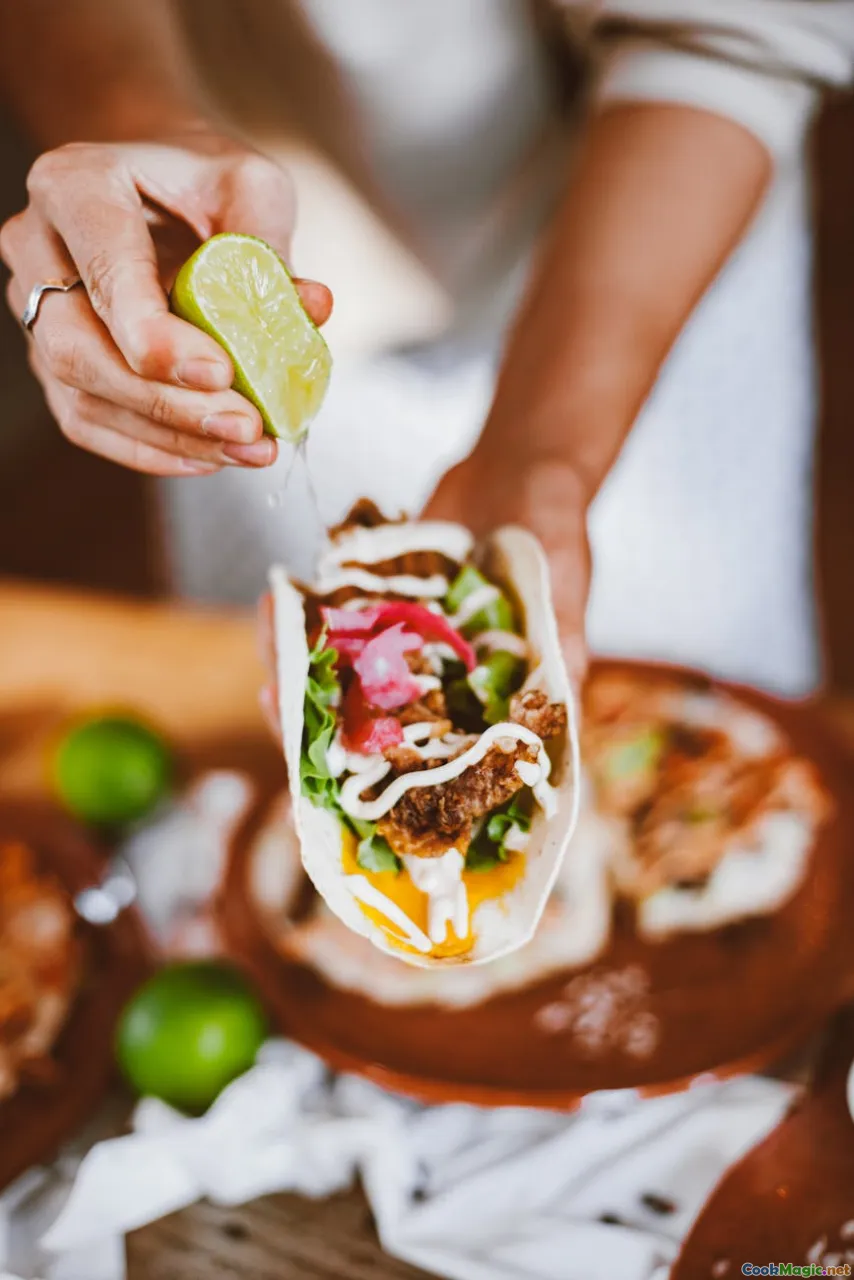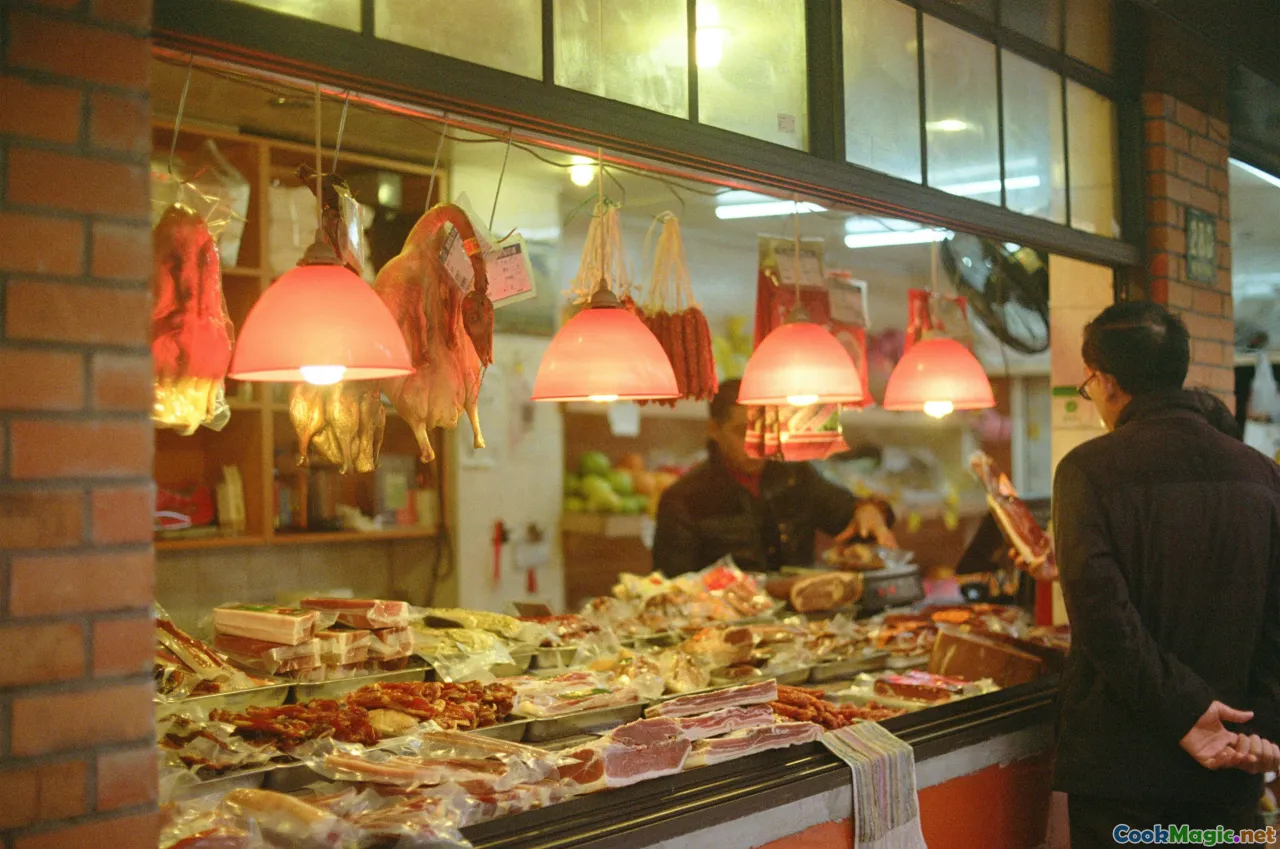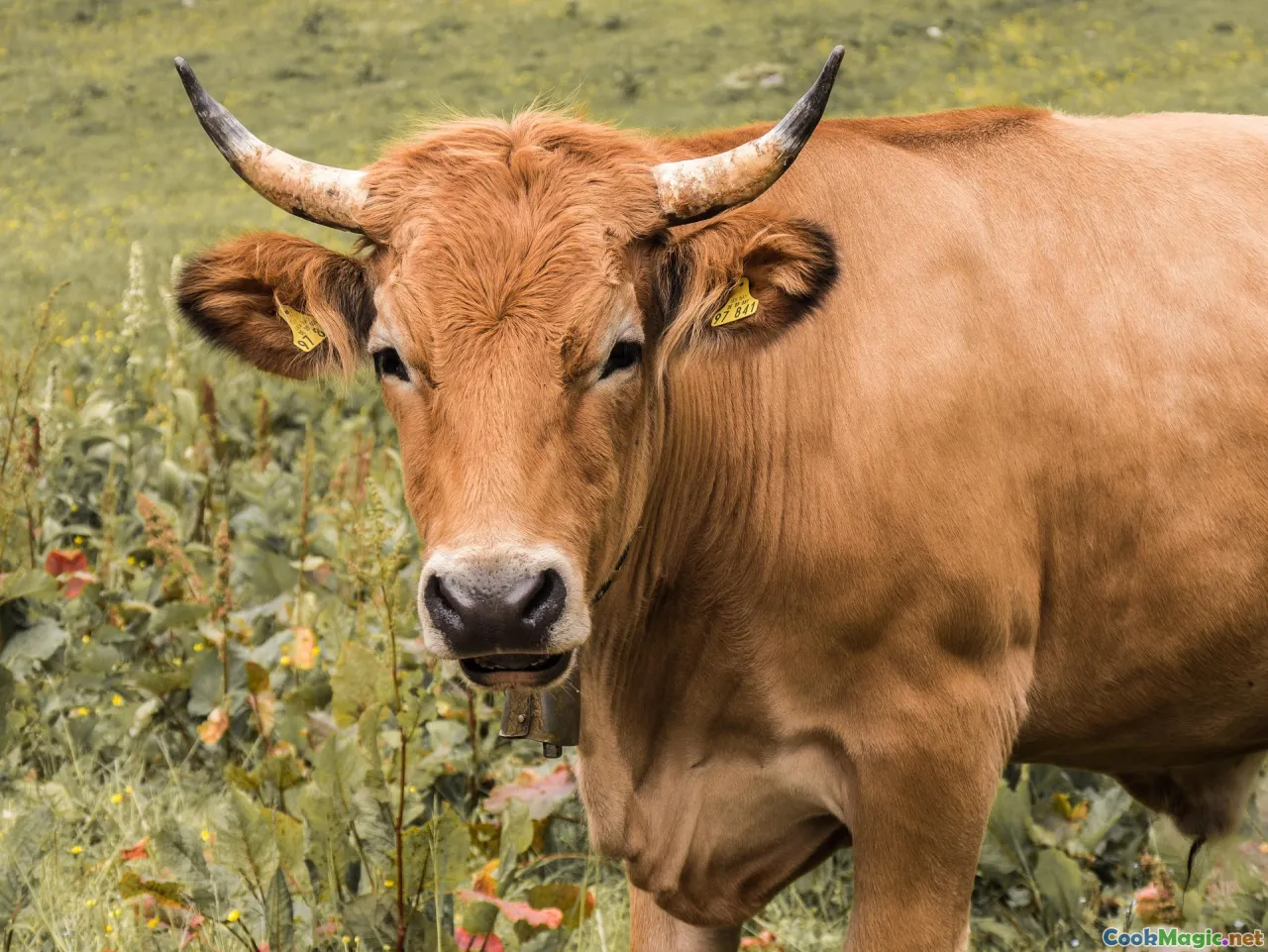
Canelons Festivi Catalani con Picada alle Noci
(Festive Catalan Canelons with Nutty Picada)
(0 Recensioni)0
1,155
luglio 31, 2025
Segnala un problema
Ingredienti
-
18 pieces Fogli di pasta per cannelloni
(Traditional or store-bought)
-
250 grams Petto di manzo magro
(Tagliare a cubetti piccoli)
-
200 grams Spalla di maiale
(Tagliare a cubetti piccoli)
-
150 grams Pollo (carne scura)
(Boneless, skinless thighs preferred)
-
1 medium Cipolla
(Tritato)
-
1 large Carota
(A dadini)
-
1 medium Porro
(Sliced and washed)
-
2 medium Pomodoro
(Grattugiato)
-
3 large Spicchi d'aglio
-
4 tbsp Olio d'oliva
(For not sticking in the pan)
-
80 ml Vino bianco
(Secco, per sfumare)
-
600 ml Latte
(Whole, for béchamel)
-
60 grams Burro
-
50 grams farina bianca semplice
-
100 grams Formaggio Manchego o Parmigiano grattugiato
-
0.25 tsp Noce moscata
Sale, to taste
Pepe nero, to taste
-
1 slice Pane rustico raffermo
(Toasted, for picada)
-
25 grams Nocciole tostate
-
25 grams Mandorle tostate
(or pine nuts for a twist)
-
2 tbsp Prezzemolo fresco
(Chopped, for picada)
-
2 tbsp Latte
(To moisten filling if too dry)
(Traditional or store-bought)
(Tagliare a cubetti piccoli)
(Tagliare a cubetti piccoli)
(Boneless, skinless thighs preferred)
(Tritato)
(A dadini)
(Sliced and washed)
(Grattugiato)
(For not sticking in the pan)
(Secco, per sfumare)
(Whole, for béchamel)
(Toasted, for picada)
(or pine nuts for a twist)
(Chopped, for picada)
(To moisten filling if too dry)
Nutrizione
- Porzioni: 6
- Dimensione Porzione: 2 pieces (250g)
- Calories: 715 kcal
- Carbohydrates: 52 g
- Protein: 34 g
- Fat: 38 g
- Fiber: 6 g
- Sugar: 8 g
- Sodium: 760 mg
- Cholesterol: 105 mg
- Calcium: 350 mg
- Iron: 4.8 mg
Istruzioni
-
1 - Prepare Meat Filling:
In a large skillet, heat olive oil. Sauté onions, carrots, and leek until soft. Add pork, beef, and chicken. Cook for 10 minutes until just golden.
-
2 - Deglaze and Simmer:
Add chopped garlic; once fragrant, stir in grated tomatoes. Pour in white wine and cook out the alcohol. Season with salt and pepper. Reduce heat and simmer for 30 minutes.
-
3 - Cool and Mince Filling:
Once the meat mixture is fully cooked, let it cool. Transfer to a food processor and coarsely mince, adding milk if very dry.
-
4 - Blanch and Prepare Cannelloni:
Cook canelons sheets in boiling salted water per packet instructions or until al dente. Spread on a damp towel.
-
5 - Fill Cannelloni:
Place a spoonful of filling on one end of each pasta sheet. Roll tightly and arrange seam-side down in a buttered baking dish.
-
6 - Make Béchamel Sauce:
Melt butter in a saucepan, add flour, stirring until golden. Gradually add hot milk, nutmeg, salt, whisking to form thick béchamel.
-
7 - Creamy Assembly:
Pour the béchamel over the filled cannelloni. Sprinkle generously with grated cheese.
-
8 - Bake:
Bake at 190°C until bubbling and golden (about 25–30 mins).
-
9 - Prepare Catalan Picada:
In a mortar, crush the toasted bread, nuts, garlic, and parsley. Mix well using a pestle until a thick, fragrant paste forms.
-
10 - Serve and Garnish:
Serve two canelons per plate, topping with a dollop of picada for zest, crunch, and authentic Catalan aroma.
In a large skillet, heat olive oil. Sauté onions, carrots, and leek until soft. Add pork, beef, and chicken. Cook for 10 minutes until just golden.
Add chopped garlic; once fragrant, stir in grated tomatoes. Pour in white wine and cook out the alcohol. Season with salt and pepper. Reduce heat and simmer for 30 minutes.
Once the meat mixture is fully cooked, let it cool. Transfer to a food processor and coarsely mince, adding milk if very dry.
Cook canelons sheets in boiling salted water per packet instructions or until al dente. Spread on a damp towel.
Place a spoonful of filling on one end of each pasta sheet. Roll tightly and arrange seam-side down in a buttered baking dish.
Melt butter in a saucepan, add flour, stirring until golden. Gradually add hot milk, nutmeg, salt, whisking to form thick béchamel.
Pour the béchamel over the filled cannelloni. Sprinkle generously with grated cheese.
Bake at 190°C until bubbling and golden (about 25–30 mins).
In a mortar, crush the toasted bread, nuts, garlic, and parsley. Mix well using a pestle until a thick, fragrant paste forms.
Serve two canelons per plate, topping with a dollop of picada for zest, crunch, and authentic Catalan aroma.
Ulteriori informazioni su: Canelons Festivi Catalani con Picada alle Noci
Canelons de Festa Major amb Picada Catalana
A Festive Masterpiece of Catalonia: Tradition Filled, Nutty Finished
Canelons de Festa Major amb Picada Catalana is a dish steeped in Catalan heritage, festivity, and home-cooked warmth. Easily recognizable from their Italian cousins (the cannelloni), Canelons as found in Catalonia stand as a reminder of nineteenth-century culinary fusion and fiestas held on grand saints’ days and winter holidays—most charmingly on the feast of Sant Esteve (St. Stephen) the day after Christmas.
A Taste of Catalonia's Festive Spirit
While pasta is a later import to Spain, Catalans rapidly made it their own. Their canelons are ingeniously stuffed with a ragù made from the trimmings of steamed or roasted meats used for fiesta meals. To elevate the rich, almost creamy, but hearty and earthy flavor profile, cooks crown the dish with breadcrumbs, tangy cheeses, and most distinctively la picada—a unique mortar-mashed amalgam of toasted nuts, rustic bread, and fragrant parsley and garlic. This picada not only gives the canelons an extra Catalan signature but ties them back through the centuries to the region’s shared Mediterranean history with Italy, France, and North Africa.
Cultural Significance & Family Tradition
Traditionally, the canelons filling is not random; it is a brilliant kitchen economy, combining the leftovers of special holiday meals—roasted meats, savory stocks, vegetables—and thus representing abundance, celebration, and family. Making canelons is often a multi-generational effort: grandparents grind veal and pork by hand, mothers blanche sheets of pasta while children roll them, and everyone grates cheese to top off the dish. It’s a ritual meal that brings families together, preserving both recipes and the sense of festivity that continual change can’t wash away.
Why Picada Matters
Most comforting is the crunchy, flavorful boost brought in by the final drizzle of Catalan picada. Picada is more than garnish—it's both a flavor enhancer and a thickener used broadly in Catalan kitchens. Here, its mix of roasted nuts (hazelnuts and almonds), earthy parsley, garlic, and breadcrumbs—finely pounded—provides pops of texture and herbal zest that cut through the creaminess. Feel free to experiment with locally available nuts (walnuts or pine nuts give their own signature) or add a little citrus zest for subtle brightness.
*Tips & Notes
- Meat blend: Festive canelons shine with mixtures of beef, pork, and chicken, but you can adapt for vegetarian by introducing sautéed mushrooms, eggplant, and lentils in your ragù instead.
- Béchamel secrets: For richer béchamel, infuse your milk with a bay leaf before making the sauce!
- Make ahead: Assemble and chill the night before, then bake just before serving for stress-free holidays.
- Leftovers: Any cooked meats (even turkey!) will be delicious finely chopped with béchamel.
Unique Aspects
This version includes a little white wine for deglazing, many fresh veggies in the ragù, and a nut–herb picada that gets spooned on after baking for true home-style authenticity. You may substitute Manchego for a sharper, local touch or opt for nutmeg and a touch of clove in your béchamel to add depth.
Personal Thoughts
Making Canelons de Festa Major is a proud act of culinary tradition. Each rolled noodle sings of family gatherings, slow-cooked care, and the distinctive gifts of Catalonia’s terroir: tangy farmhouse cheese, toasted almonds, orchard herbs, and garden-fresh produce. If you are looking to introduce your dining table to an authentic Spanish festive dish, these canelons, with the nutty, garlic-heavy picada alongside, make the perfect ambassador for the magic of Catalonia. Once you have tasted them, might I dare say—Christmas lasagna may never be enough again!
Final Word
Serve Canelons de Festa Major surrounded by those you love, under twinkling lights, with strong Catalan red wine, and find yourself transported to a bustling Barcelona home at the height of the festival season. Bon profit!

























